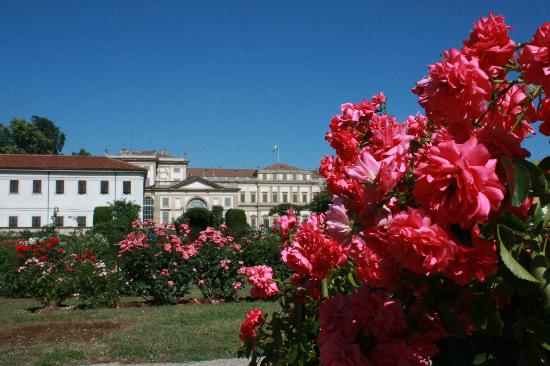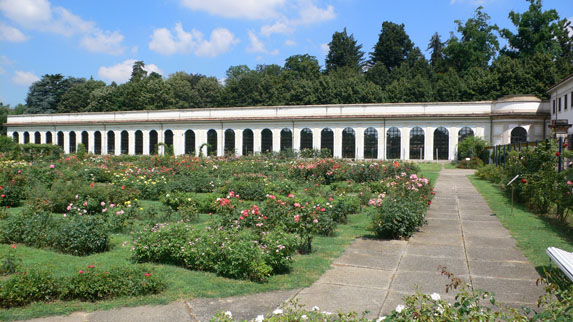
Villa Reale di Monza
This post is also available in:
 Italiano (Italian)
Italiano (Italian)
Empress Maria Teresa of Austria decided to build the Villa Reale in Monza in 1777, choosing the land next to a small farmhouse near Monza; it was a particularly beautiful place, conveniently set along the Milan-Vienna route.
The architect, Giuseppe Piermarini, designed a U-shaped neoclassical building inspired to traditional local villas but took some precious inspiration from the Palace of Caserta – which was already under construction by Luigi Vanvitelli and under his supervision.
The garden of the villa was built right where canals and waterways were already present and therefore used also for irrigation a beautiful pond. One part of the garden was designed with the French-style central canal; two other parts, north and south, were arranged as English gardens with painstakingly designed, ponds, caves and ruins, as the new romantic taste suggested.
In 1805, a huge park was created next to the existing complex, with the aim of making it a model estate and a hunting reserve. It was the architect Luigi Canonica who took care of the landscape project by extending the estate to the Mirabella and Mirabellino villas. In 1807, the park was further enlarged reaching the village of Biassono and fitted with a fence built on the pre-existing city walls of Monza. The park was full of green meadows and pastures, mulberries for silkworms, vineyards, and orchards. It also contained some ancient woods like Bosco Bello, renowned for its excellent wood since the 4th century. Farms and mills in this estate went on with their agricultural activities, perfectly blended with the new vegetation thanks to a thorough landscape planning.
THE PARK
In the XIX century, the area of Brianza was basically a very large garden: unprecedented at its time, and still one of its kind today. Back then, the new park immediately became a precious resource for botanical research. On one side of the estate, a most valuable nursery was built, along with a school for gardeners where numberless experiments were performed to improve the cultivation techniques. This also helped make the park even more famous and renowned.
A lemon grove was created on the northwest side of the palace, facing the current rose garden. Citrus fruits grew abundant, while autochthonous plants and exotic species were grown along the southwest wing of the building. It currently houses temporary exhibitions and has been completely renovated.
Plant species specs: 43 species of Quercus spp., 30 of Fraxinus spp. , 22 of Prunus spp. , as well as 16 species of Magnolia spp. , 30 of Ficus spp. , 52 of Citrus spp.
THE AGRICULTURAL SCHOOL OF MONZA PARK
In the park of Villa Reale there is also the Agricultural School of Monza Park, an excellent professional training centre – highly acclaimed throughout the Country – which offers specialist training courses, and refresher courses for technicians, gardeners, botanists, farmers, florists, landscape designers, etc.
This post is also available in:
 Italiano (Italian)
Italiano (Italian)
Contatti
V.le Regina Margherita, 2 - Monza(MB)
039 323222
Altre info
Gratuito
Aperto tutti i giorni. Orario invernale: dalle 7.00 alle 18.30. Orario estivo: dalle 7.00 alle 20.00




